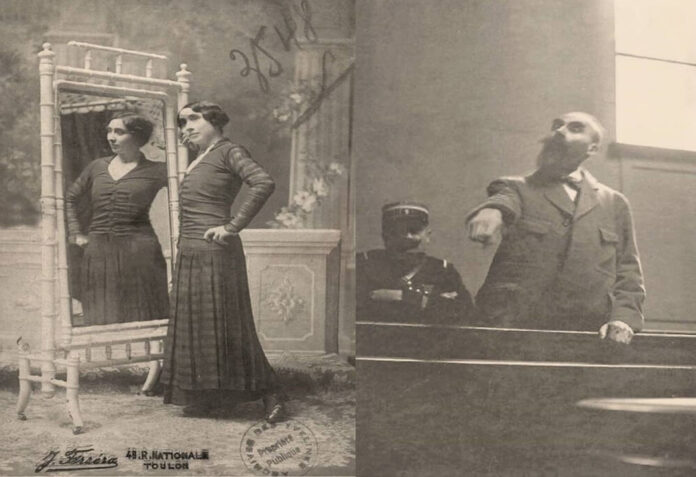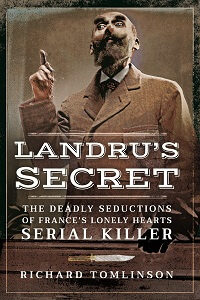
Richard Tomlinson is an award-winning international journalist who holds a doctorate from Cambridge University in modern French history, ideally placing him to unlock the enigma of France’s World War One serial killer Henri Désiré Landru.
In Landru’s Secret, Tomlinson draws on hidden documents in the Paris police archives to expose the truth about a murder case with no bodies and a deranged suspect who insisted to the end on his innocence. The author shows beyond reasonable doubt that Landru killed more women – possibly many more – than the 10 fiancées who vanished at two lonely country houses near Paris. Landru’s Secret – The Deadly Seductions of France’s Lonely Hearts Serial Killer by Richard Tomlinson was published by Pen & Sword Books on 10 October 2018. Read an article by Radio France Internationale on Landru’s Secret including a video featuring Richard Tomlinson and important sites from the book.
Buy From Amazon and Pen & Sword Books
Article written by Richard Tomlinson
Between 1915 and 1919 French serial killer Henri Désiré Landru is known to have taken the lives of 10 women and one youth before he was caught. Here, author Richard Tomlinson breaks open this intriguing case, revealing how the police misinterpreted a crucial piece of evidence, Landru’s incriminating notebook, which was then almost certainly stolen by one of the detectives, allowing the secrets it contained to remain untold.
In the spring of 1915 a convicted Parisian swindler on the run from the law acquired a little black moleskin diary to keep track of his increasingly busy life. Over the next four years, he filled up his notebook with records of his transactions, from the gifts he bought for his many women friends to the one-way train tickets he purchased when they travelled with him to the country.
Sometime between mid-January and mid-April 1919, the swindler turned to a clean page in the notebook and wrote out a list of 11 names and codenames in careful, clearly legible handwriting, quite unlike the rest of his jottings. The list read: “Cuchet, J., Idem, Brésil, Crozatier, Havre, Collomb, Babelay, Buisson, Jaume, Pascal, Marchadier”. On 12 April 1919 the swindler was finally arrested on suspicion of involvement in the disappearance of two middle-aged widows. When the police ordered him to empty the pockets of his grubby yellow tunic, out came the notebook.
Henri Désiré Landru’s notebook, or ‘carnet’ in French, is arguably the most infamous item of evidence in French criminal history. It is also a far more ambiguous document than the authorities ever acknowledged. In the official version of the case, the 10 women and one youth on Landru’s list, several of whose names were written in code, were his only murder victims. Yet a close examination of thousands of pre-trial documents held by the Paris police archives and the departmental archives for Yvelines suggests that Landru killed more women – possibly many more – than the 10 fiancées who vanished at two country houses he rented during the First World War.
The same material also indicates that the official explanation for the carnet’s own disappearance from the police archives is almost certainly untrue. After the Second World War, the story arose that the carnet had been removed by the Nazis during the German occupation of Paris and probably transported to Berlin. It is far more likely that the carnet was stolen a decade earlier by one of the leading detectives in the case.
To understand how the list came to define the case, and how the carnet could subsequently disappear, one has to go back to the start of an investigation that was dogged from the outset by confusion and incompetence.
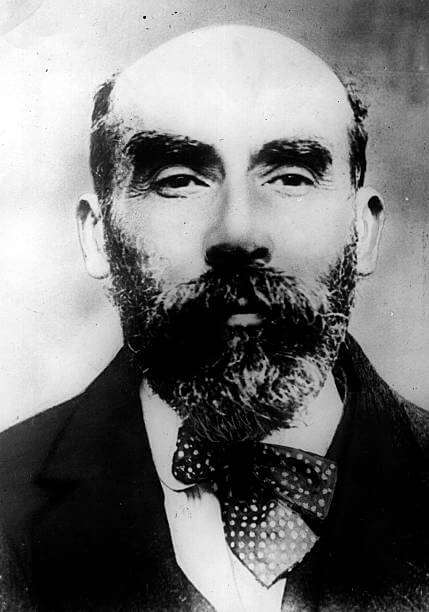
At about 9:30 am on Sunday, 13 April 1919, the day after Landru’s arrest, Commissioner Amédée Dautel of the Paris flying squad began what he called an initial “survey” of the Villa Tric. This was the house that Landru had rented from 1915 to 1919 near the village of Gambais, 50 kilometres southwest of Paris.
Dautel, 39, sensed that he was circling a serial killer, having been the first detective to spot the list in Landru’s carnet. Dautel’s deputy, Inspector Jules Belin, 34, shared his excitement. The two officers hoped to discover the remains of most or even all the individuals on Landru’s list and take the glory for nailing a mass murderer. However, Dautel and Belin were also in a hurry, because by noon they had to deliver the handcuffed Landru to the public prosecutor’s office in the town of Mantes, 20 kilometres away.
Everything about their “survey” betrayed their haste. Dautel had not brought any forensic experts down from Paris and he was so short of officers that the gates to the house and grounds were left unguarded. Curious villagers wandered around the crime scene, while the police searched in vain for human bodies. All they found were the corpses of three dogs, buried in a shallow grave in the back garden. Landru acknowledged he had strangled the animals and helpfully pointed to another spot where he said he had buried a cat.
Dautel was too short of time to investigate this second site, or to check out two locked sheds and a large open hangar at the end of the garden. He could not even be bothered to observe judicial procedure and attach official seals to the front door and gates to the villa. Instead, he called off the “survey”, ordered Landru’s escort to bundle him back into a car, and the convoy drove off to Mantes.
Two days later, on the morning of Tuesday 15 April, Gabriel Bonin, a senior investigating magistrate with the Paris judiciary, began a search of The Lodge, the house which Landru had rented from December 1914 to August 1915 in the small town of Vernouillet, 35 kilometres northwest of Paris. Bonin, 40, had brought a full complement of forensic experts and police officers, including Dautel and Belin. Yet like Dautel at Gambais, Bonin did not have full authorisation to conduct the search, since Vernouillet was also located in the department of Seine-et-Oise and therefore fell within the jurisdiction of Mantes, where Landru was in custody in the town jail. This may explain why Bonin declined to summon Landru to attend the search of The Lodge, a breach of the suspect’s legal rights.
Bonin did not take long to conclude that the house and extensive back garden contained no usable forensic evidence. It was more than four and a half years since Landru had lived at The Lodge, and in the intervening period, a series of short-term tenants had tramped all over the house and grounds. At the end of the morning Bonin called off the search. From now on, he would focus all his attention on the sinister Villa Tric outside Gambais, where Dautel and Belin had at least found three dead dogs – a portent, Bonin hoped, of human bodies.
Related: The Early Executioners of France: Les Bourreaux, ‘Executors of High Works’
More than a week now passed, while the legal tug of war over Landru continued between the rival judiciaries in Paris and Mantes. On 24 April the French justice ministry finally ruled in favour of Paris, formally appointing Bonin as the investigating magistrate for the whole case. Bonin immediately engineered a reorganisation of the police enquiry. He was appalled by Dautel and Belin’s superficial “survey” of the Villa Tric and their failure to attach police seals to the property, a mistake he immediately rectified. Bonin now lobbied successfully for Brigadier Louis Riboulet of Paris’s judicial police to take charge of the enquiry in the capital, leaving Dautel and Belin to focus on Vernouillet and Gambais.
It looked on paper like a neat geographical division of labour, yet it soon became clear that Riboulet, Dautel, and Belin had no intention of avoiding each other’s territory. On 27 April, for example, Riboulet travelled down to Mantes with Belin to collect Landru from the town jail and bring him back to Paris. Crucially, though, it was Riboulet whom Bonin assigned to analyse Landru’s carnet, a task which consumed Riboulet for most of the summer and autumn of 1919.
Riboulet locked himself in a room at Paris police headquarters and pored over the carnet’s jumble of notes, figures, and hieroglyphics until he had extracted a mass of incriminating information. Here were Landru’s purchases of one-way train tickets for his “fiancées” on their last journey to the Villa Tric; there, usually on the next page, were his notes recording the hour when he had killed the women (or so Riboulet believed). Above all, there was Landru’s ominous list of 11 names, providing an apparently straightforward accounting of the murders he had committed.
As he drilled further into the carnet, Riboulet deduced that Landru had spent a total of 105 days at the Villa Tric between December 1915, when he leased the property, and his arrest in April 1919. To reach this conclusion, Riboulet assumed that Landru had recorded all his movements between Paris and Gambais in the carnet, just as the detective took it for granted that Landru’s list of 10 women and one young man represented all his murder victims. It did not occur to Riboulet to test these assumptions against other evidence, notably witness statements to the police.
The importance of the carnet to the case increased as Bonin’s investigation ran into trouble on two other fronts. On 29 April 1919, during a full-scale forensic search of the Villa Tric, police discovered a scattering of burnt bone fragments and women’s apparel beneath a pile of leaves in an open shed at the end of the garden. It seemed like a critical breakthrough, and minutes later, a newspaper reporter overheard Bonin remarking gleefully to the forensic pathologist Dr. Charles Paul that he would “wrap up” the case in less than three days. Bonin soon had cause to regret his boast. The bone debris clearly indicated foul play, yet Paul could not tie these tiny charred fragments directly to the seven women on Landru’s list who had disappeared at Gambais. Paul could not even be sure that the fragments came from female skeletons, because Landru had disposed of the pelvic bone matter.
Meanwhile, Bonin could not break Landru during repeated interrogation sessions in Bonin’s cabinet at Paris’s Palais de Justice. Typically, Landru would refuse to answer questions at all or taunt Bonin that it was up to the authorities to provide “the proofs” of the charges against him, adding that he was wholly innocent. Then he would retreat once more into surly silence.
Eventually, Bonin’s patience snapped. “I’m sick of you,” he yelled at Landru one day in August 1919, after another fruitless interrogation.
“Try not to get so cross,” Landru retorted calmly.
Somehow, Bonin had to construct a case against Landru that connected all 11 presumed murders and that was sufficiently simple for a jury to understand. To this end, Bonin eliminated Landru’s wife and eldest son Maurice (also a convicted swindler) from the case, even though they had certainly been accomplices to Landru’s thefts from several of the missing women. The release of Mme Landru and Maurice from custody in July 1920 left Bonin free to finalise a straightforward narrative.
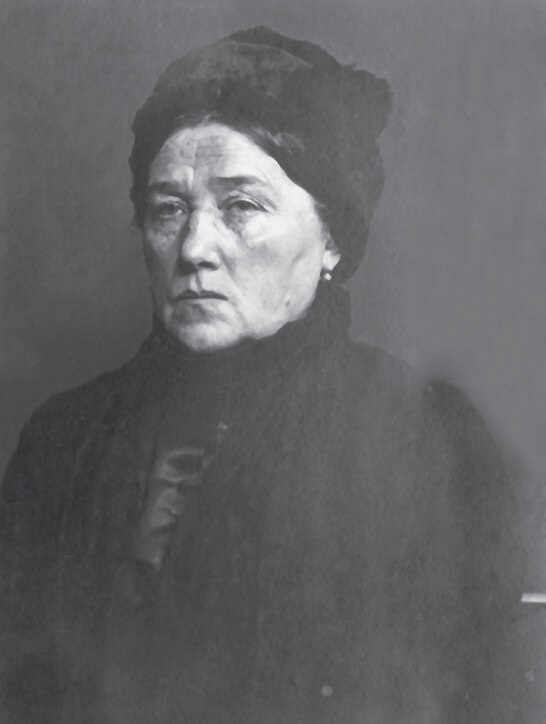
In Bonin’s version, Landru was nothing but a marriage swindler, motivated purely by financial gain, who in a lethal twist had murdered his victims to prevent them from going to the police. As for the women, they had all been weak-willed, vulnerable and besotted by Landru; most of them had also possessed “loose” morals. “We are in the presence of facts which are reproduced identically,” Bonin informed Landru in August 1920, shortly before concluding his investigation.
The flaws in Bonin’s narrative were plain to a magistrate called Gazier, who drafted the 364-page pre-trial submission on the case which was sent to the Paris judiciary in December 1920. Six of the women on Landru’s list had been extremely poor and therefore implausible targets for a marriage swindler. When Gazier arrived at the case of Andrée Babelay, a destitute 19-year-old nanny, he felt bound to write that Landru’s motive for killing her “escapes us”. Yet Andrée’s disappearance was far less perplexing than that of the first name on the list, a 39-year-old widowed seamstress called Jeanne Cuchet, who had vanished at Vernouillet with her 17-year-old son André in early 1915.
As the first of the missing women, Jeanne was supposed to set the pattern for all the supposedly “identical” murders that followed. Instead, close scrutiny of the police files on her case reveals several key differences between her situation and that of the other nine women on the murder charge sheet. Jeanne was the only one of Landru’s known victims who discovered his true identity and the fact that he was a criminal on the run. Despite this knowledge, she had still returned to him. Jeanne’s bossy sister and her brother-in-law also knew Landru’s real name and criminal record, but they failed to report her disappearance for more than four years, until Landru’s arrest. Jeanne and 17-year-old André Cuchet also represented the only double murder on Landru’s list: a mother and son, killed at the same time in the same house.
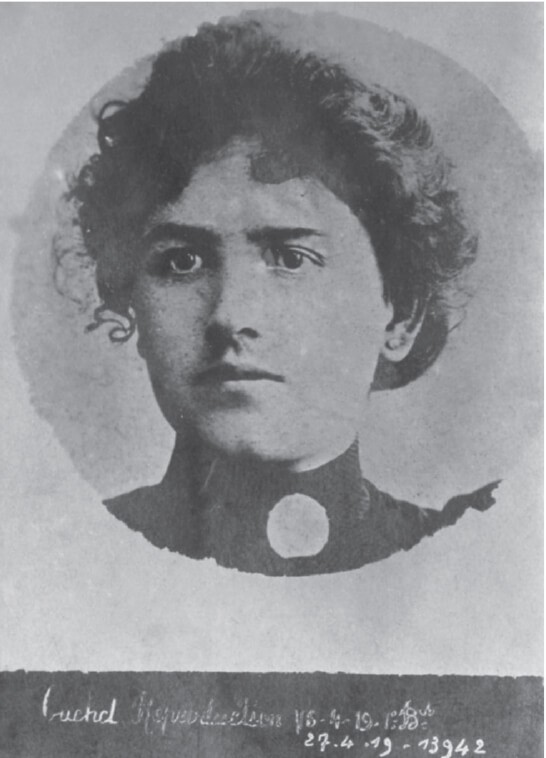
Bonin’s greatest difficulty concerned Jeanne’s financial circumstances. It was axiomatic that she must have had assets worth stealing if Landru had been solely interested in her money. In April 1919, fresh from his first police interview, Jeanne’s brother-in-law helpfully told Le Journal newspaper that she had been “worth” about 100,000 francs, or roughly 300,000 euros in today’s money. This was a fantastical fortune for a humble seamstress and single mother and the figure was completely untrue. In reality, Jeanne had been grindingly poor. Her late husband’s will, summarised in a police report, showed that he had left her nothing apart from medical and funeral bills, a fact confirmed by two witnesses who had seen the full document. Jeanne’s bank records, also collected by the police, revealed that she had sold almost all her paltry savings by early 1914 when she first met Landru. All that remained was a small portfolio of municipal bonds with a market value of barely 300 francs.
Bonin’s difficulties with Jeanne’s case increased when he considered Landru’s finances on the eve of the First World War. Landru was loaded with money, having just executed the most successful swindle of his mediocre career as a fraudster. In the autumn and winter of 1913-14, he had duped more than a dozen hopeful shareholders into handing him a total of 35,600 francs to “invest” in a fictitious automobile venture. On top of this loot, Landru still had most of the 12,000 francs that he had inherited from his father, who had committed suicide in 1912. In sum, Landru was rich and Jeanne was poor; he had no incentive to rob a woman who had almost nothing worth stealing anyway.
***
The gaps and flaws in the case against Landru meant the carnet acquired a totemic significance at his trial in November 1921. For the prosecution, Landru’s notes provided a detailed record of his murders. The detective Riboulet, who in his own view had deciphered the carnet, insisted on the witness stand that there was a correspondence between Landru’s noting of the hour of the day on particular dates and the hour when he had killed his latest victim. Landru ridiculed this theory. “One finds the number 4 and that’s it: Landru killed at 4 o’clock,” Landru objected to the judge. “Well, permit me to tell you, it’s a singular interpretation.”
During the trial, Riboulet was clearly the custodian of the carnet. On one occasion, when Landru’s defence attorney Vincent de Moro Giafferri cross-examined Riboulet about one of Landru’s notes, the judge invited Riboulet to approach the defence bench with the carnet so that Moro could check the entry. What happened to the carnet after the trial is an altogether murkier story.
It is possible that Riboulet returned the carnet to the Paris police archives, to be housed with the rest of the case material. Yet there is no record in the archives’ catalogues that he ever did so. In 1926 Riboulet retired from the judicial police at the age of 50 and set up a private detective agency. He was sufficiently adept at self-promotion for one newspaper to hail him in 1931 as the officer whose “implacable logic” had secured Landru’s conviction. Two years later, Riboulet published La Véritable Affaire Landru (‘The Truth about the Landru Case’), his inside account of the investigation, ghostwritten by a newspaper journalist.
Riboulet’s book relied heavily on extensive reproduction of Landru’s notes in his carnet. Riboulet also used a substantial volume of other original case material which is also now missing from the police archives and another archive near Versailles; in particular, correspondence between Landru and several of his known victims. It is possible again that Riboulet returned all these documents, including the carnet, to the archives, where they were later removed during the German occupation of Paris. But it seems more likely that the material remained in Riboulet’s possession and is now in private hands.
This is not, however, the most intriguing aspect of Riboulet’s curious book. At Landru’s trial, the judge, Maurice Gilbert, was under the mistaken impression that the carnet covered the entire period of the charges, from the moment Landru had met Jeanne Cuchet in early 1914. At one point, Gilbert expressed surprise that when Landru had deposited a substantial sum in a bank in June 1914 he had not recorded the sum in his carnet. The reason was simple. Landru did not acquire the notebook until the spring of 1915, after Jeanne and André Cuchet’s disappearance.
Riboulet did not correct the record until he published his book in 1933, when he disclosed an interesting fact about Landru’s use of the carnet. According to Riboulet, Landru did not start to keep detailed notes in the carnet until the summer of 1916, by which time five of the 11 individuals on his “fatal list” had already disappeared. In other words, the carnet could not be treated as a comprehensive log of Landru’s movements and transactions for more than a year after he obtained it.
Riboulet still assumed that all Landru’s movements between Paris and Gambais from the summer of 1916 until his arrest in April 1919 could be reconstructed from his notes in the carnet. Yet one episode, in particular, suggests that Riboulet was wrong.
On the afternoon of Tuesday, 26 March 1917, 37-year-old Anne-Marie Pascal caught a train with Landru to the town of Houdan, the nearest station to Gambais. “Annette”, as she was called by her friends and family, was in fear for her life; not from her fiancé, whom she knew as “Lucien Forest”, but from the German bombardment of Paris. This was why Landru, alias Forest, had invited Annette to come and live with him at his country house near Gambais. First, though, he wanted Annette to inspect the Villa Tric, to check that it was suitable for her.
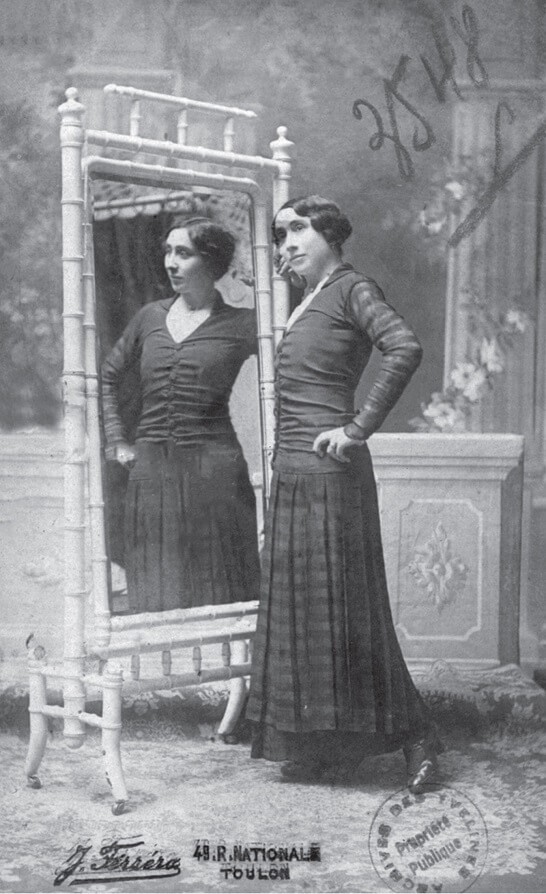
On the evening of Wednesday, 27 March, Annette returned from Gambais to her tiny sixth-floor apartment on a quiet street near Paris’s Père Lachaise cemetery, where she scrimped a living as a dressmaker. Annette was alone, as was later confirmed by her concierge, who saw her arrive. Nonetheless, Riboulet took it for granted that Landru had also returned to Paris with Annette.
In fact, Landru had almost certainly stayed on at the Villa Tric, based on a lengthy statement given to the flying squad detective Amédée Dautel by a local woman, shortly after Landru’s arrest. On Friday 29 March, at about midday, Mme Marie Bizeau, 47, encountered Landru by a pond set deep in a vast forest about two miles east of Gambais. Mme Bizeau had good reason to remember the incident. Her husband, a gamekeeper at the nearby chateau, had been chest-high in the water, helping other men restock the pond with fish. She had been watching from the bank when Landru had appeared by her side. “What numbskulls,” he had sneered, pointing in particular at her husband. In her fury, she had grabbed Landru by the sleeve and suggested that he might like to get in the water and give the men a hand. Landru had shaken her off and wandered away into the forest.
About two hours later, Mme Bizeau was giving her husband some dry clothes when she saw Landru emerging from the trees with a “rather fat” woman in a fur coat who looked about 30 and two small girls, aged about eight and ten. The woman complained to “Monsieur Dupont” about the cold and told him firmly that it was time to go home.
There seems little doubt that Mme Bizeau really had seen Landru. Like other villagers, she knew him as Dupont and was aware that he rented the Villa Tric. It is possible, of course, that she had mistaken the date, but it does not appear likely, given the emphatic confidence of her statement. If she was right, then Landru could not have spent the whole of the last week of Annette Pascal’s life with her, as the prosecution at Landru’s trial maintained. He either returned with Annette to Paris on 27 March, spent the night apart from her, and then went back to Gambais on 28 March or early on 29 March; or more plausibly, he did not return to Paris until the weekend of 30-31 March, when Annette reported in a letter to her elder sister that he had given her a present of jewellery.
Finally, on 4 April, Landru noted in his carnet the purchase of two train tickets to Houdan, the station closest to Gambais: a return ticket for him and a one-way ticket for Annette. The following day she disappeared.
Mme Bizeau’s testimony exposed the methodical flaw in assuming that Landru’s “fatal list” of 11 names represented the sum total of his murders. During the investigation and trial, any witness whose testimony even hinted that he could have killed other women was either ignored or publicly mocked. Mme Bizeau was not called to testify at Landru’s trial, while an army doctor who had seen Landru dropping a suspicious package in the same pond had his witness statement discounted by both the prosecution and the defence. The problem was the date of his sighting – late May or early June 1916 – which fell halfway between the disappearances of the fifth victim on the list (December 1915) and the sixth (December 1916).
Two elderly peasant women were laughed at in court when they insisted under oath that they had seen and smelt nauseating smoke churning out of the Villa Tric in the autumn of 1917. It was a recurring theme in the case, suggesting that Landru might have been burning human remains in his oven. Yet as with the doctor (who also saw foul smoke at the villa), the difficulty with the women’s testimony was the timing: too late to match the disappearance of the eighth victim on the list and too early for the ninth.
Their duty done, the two old ladies left the court, looking rather crestfallen. “The jurors are people of good sense,” Le Journal commented, “and will know how to identify the large part inevitably played in such depositions by gossiping in the village, scandal-mongering and imaginative hindsight.”
***
The press, like the jury, had been led to believe that the police had traced all the women Landru had contacted during his terrifying wartime rampage, apart from the 10 missing fiancées. It was not true. The plump, fur-coated lady was never located and nor, it seems, were dozens of other women who had entered Landru’s orbit.
In a report sent to Bonin, the police acknowledged that of the 283 women who were known to have made contact with Landru, “the identity of 72 individuals had not been established”. The report is undated, leaving open the possibility that some of these women were eventually traced and eliminated from the enquiry. As for the others, the fact that they had not been found did not mean that Landru had killed them, a point he made ad nauseam in relation to the 10 women on his list.
Yet nor was it true that the police had come close to gauging the full extent of Landru’s harvesting of women, even taking the anonymous 72 women into account. The police arrived at the grand total of 283 “romantic” contacts from three written sources: the carnet, the files Landru kept on women who answered his lonely hearts adverts, and the records of matrimonial agencies where he had registered under various false names. What these sources failed to log was Landru’s voracious, opportunistic pursuit of women on the spur of the moment, whenever he wanted sex. There is plenty of circumstantial evidence in the case archives that Landru regularly picked up women while riding on buses or the metro, or by hanging around outside factory gates; or when the weather was warm, trawling in public parks and gardens.
The last such encounter occurred at about 10.15 am on Saturday, 12 April 1919, when Landru accosted a 35-year-old woman called Adrienne Deschamps while travelling on the Paris metro between the Réamur and Opéra stations. Adrienne, who may have been a prostitute, arranged a rendezvous for the following week with Landru. Less than two hours later, Landru was arrested along with his mistress (who was soon released) at his apartment near the Gare du Nord.
This frenzied, random sexual activity, mostly unrecorded, has a bearing on why Landru might have written his “fatal list” and what the list signified. During the investigation and at his trial, Landru was regularly described as “methodical”, “logical” and “orderly”. Superficially, his neat, careful list fitted this portrayal. Yet there is an alternative interpretation, where the list was an attempt by a man going out of his mind to impose order on mental chaos. From this perspective, the list could have been a despairing attempt by Landru to record the murders he could still remember, as distinct from the total number he had committed, before he lost his grip on reality.
***
The question of whether Landru was sane was a matter of intense dispute. In August 1919 three eminent psychiatrists, Dr. Charles Vallon, Dr. Joseph Rogues de Fursac and Dr. Jacques Roubinovitch, were commissioned to assess whether Landru was mentally fit to stand trial. The doctors concluded that Landru’s mentality was “in all points normal, once all questions of criminality are excluded”. This bizarre caveat did not alter what anyone could see from Landru’s erratic behaviour in court. He was clearly mad by any everyday definition of the term, despite the doctors’ emphatic assertion that “Landru [was] not affected by any mental illness”.
The psychiatrists’ opinion was especially strange because it seemed to contradict a much earlier diagnosis of Landru. In 1904 Vallon had been summoned to the Santé prison after Landru, who was awaiting trial for various swindling offences, had staged what looked like a fake suicide attempt. Vallon had concluded that Landru exhibited signs of depression and irrationality. In Vallon’s view, the prisoner was “on the frontiers of madness, but had not yet crossed them”, a clinical assessment endorsed by Roubinovitch and Rogues de Fursac when the court also asked them to examine Landru. Meanwhile, Vallon had been sufficiently troubled by Landru’s behaviour that he had warned Landru’s wife to be on her guard in future.
In 1919 the circumstances were completely different. This time, it was Landru who requested a psychiatric examination on the advice of his lawyer, who realised that Landru’s best chance of avoiding the guillotine was to have him committed to a mental asylum. In contrast, the investigating magistrate Bonin was under intense public and political pressure to assemble a case and bring Landru to trial. Bonin, therefore, had a direct interest in Landru being declared sane.
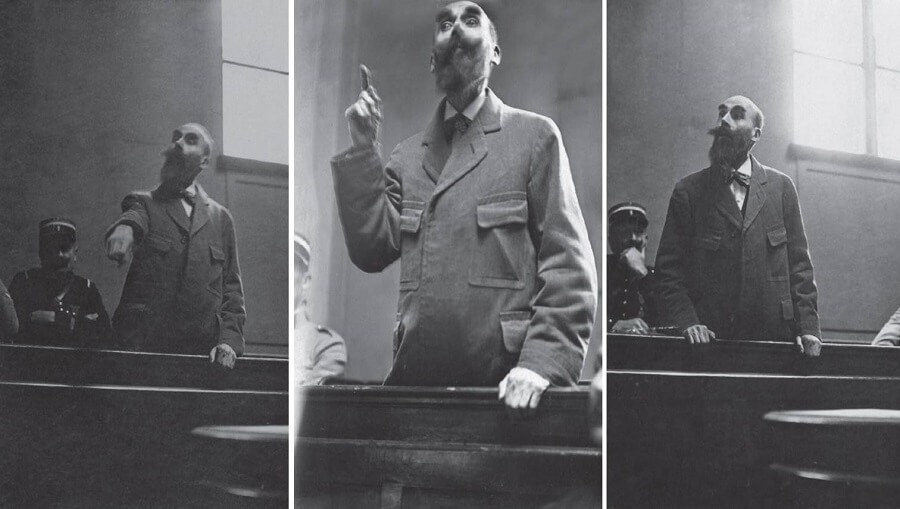
Vallon, Roubinovitch and Rogues de Fursac’s eventual submission on Landru’s “mental state” bore the hallmarks of having been compiled to give Bonin the answer he wanted. The doctors took ten months to deliver their slim, 13-page report, which included a three-page summary of the case of no clinical relevance. The report also included selected extracts from a personal memoir that Landru had written the previous autumn, which the doctors reproduced without comment.
This memoir did, however, offer a possible clue about why Landru had written his list. In a section devoted to his various ailments, he referred to his “rebellious” memory and added:
“I have reached a point where I am obliged to write down everything that I need to recall, even the smallest things. At certain moments, my life flows before me like a dream without it being possible for me to say if it really happened to me or another person. At other times the details come back to me with a clarity and precision which make me suppose that the facts have just happened or, having lived another existence at another time in other places, I had died, and, coming back to life as another person, I had kept the memory.”
Some caution is necessary when reading this passage. Landru was a seasoned practitioner of the standard con man’s defence that he could not remember an incident. He could have been faking amnesia. Yet the image of a man detached from his previous life, as if it had been lived by someone else, accords with Landru’s dogged insistence on his absolute innocence. His apparent certainty was unshakeable, right up to the night before his execution, when he wrote a furious, accusatory letter to the chief prosecuting attorney insisting that the charges against him were false. Either Landru was an astonishingly accomplished method actor, having kept up this performance for almost three years, or he really believed, in his words, that he died “with an innocent, peaceful soul”.
A century later, there seems little purpose in trying to identify Landru’s precise mental condition. One would need the patient in the room, especially given the superficial nature of the psychiatrists’ report. What is clear, though, is that Landru’s obduracy, combined with the dearth of hard forensic evidence, drew the police and judiciary into a lazy, conceptual error. They regarded the list as the final word on Landru’s crimes, rather than the point of departure for a comprehensive murder enquiry. Put crudely, the authorities were more concerned with sending Landru to the guillotine than with establishing how many women he had killed.
In making this error, Bonin and the police ignored the most basic rule of good detective work: they failed to go back to the start of the plot to investigate how and why the horror had begun. Bonin’s fixation on Landru’s house at Gambais, where human bone debris had been found, came at the expense of his complete neglect of the earlier property at Vernouillet, following a single cursory search.
But Bonin needed to go back further still, to early 1914 and a pretty Parisian seamstress called Jeanne Cuchet who liked to go cycling around the city with the one true love of her life: not Landru, but her adored teenage son. This was where the plot began, before veering off in an altogether different direction from the narrative Bonin constructed.
© Richard Tomlinson, October 2018. All rights reserved.

